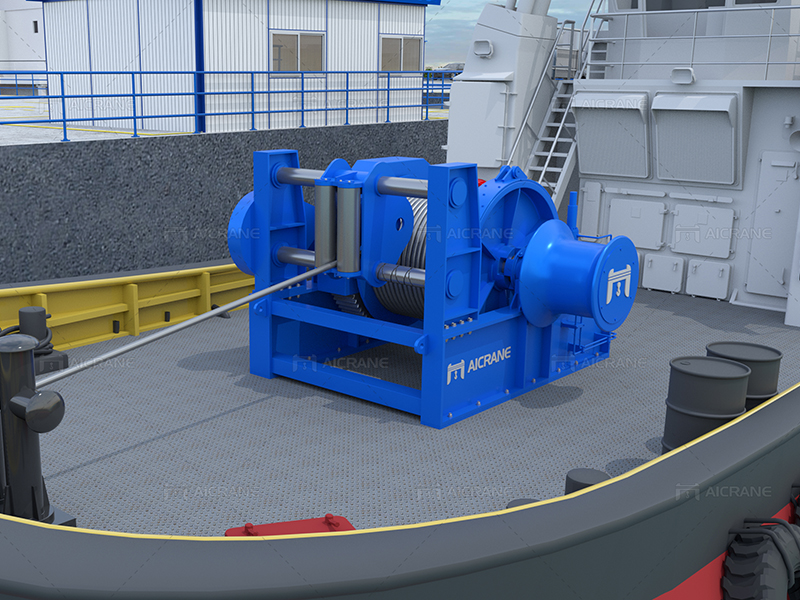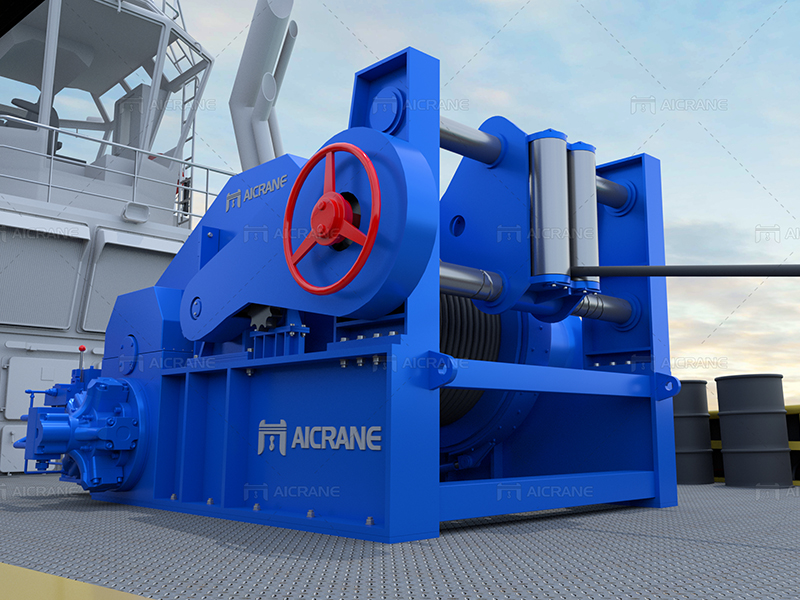Hydraulic towing winches are indispensable components in maritime operations, serving a crucial role in the towing and mooring of vessels. These winches rely on hydraulic systems to exert the necessary force for towing and anchoring activities. An often-overlooked but vital aspect of hydraulic towing winches is the dynamic braking system. In this article, we will delve into the importance of a dynamic braking system in hydraulic towing winches, exploring how it enhances safety, efficiency, and overall performance in maritime operations.

Understanding Hydraulic Towing Winches:
Hydraulic towing winches are power-driven devices designed to wind and unwind cables or ropes, allowing for the controlled movement of vessels during towing or mooring operations. These hydraulic towing winches utilize hydraulic power to generate the force needed for pulling or holding loads. Hydraulic systems offer advantages such as precise control, high power density, and the ability to handle heavy loads, making them a popular choice in the maritime industry.
Fundamentals of Dynamic Braking:
Dynamic braking is a braking mechanism that converts the kinetic energy of a moving object into electrical energy, dissipating it as heat. In the context of hydraulic towing winches, dynamic braking plays a crucial role in controlling and slowing down the motion of the cable or rope when it is being paid out rapidly. This is especially important during emergency situations or when there is a sudden need to arrest the motion of the towed or moored vessel.
Enhancing Safety during Rapid Pay-out:
One of the primary functions of a dynamic braking system in hydraulic towing winches is to enhance safety during rapid pay-out of cables or ropes. In scenarios where a vessel needs to release the towing line quickly, such as during an emergency or to respond to changing conditions, a dynamic braking system ensures that the cable is paid out in a controlled manner.
Without dynamic braking, the cable could be released uncontrollably, leading to dangerous situations such as snapbacks, which pose a significant risk to both personnel and equipment. The dynamic braking system acts as a crucial safety feature, preventing sudden and uncontrolled movements that could result in accidents and injuries.
Preventing Overheating and Excessive Wear:
Rapid pay-out of cables without an effective braking system can lead to overheating and excessive wear on the winch components. The dynamic braking system absorbs the excess energy generated during the cable release, preventing the winch from overheating. This not only extends the lifespan of the winch but also reduces the frequency of maintenance and the associated downtime, contributing to overall operational efficiency.
Controlled Deceleration during Towing:
In addition to emergency situations, controlled deceleration is essential during routine towing and mooring operations. The dynamic braking system allows the hydraulic towing winch to slow down the motion of the cable in a controlled manner, facilitating precise positioning and maneuvering of the towed vessel. This level of control is especially critical when approaching docks, berths, or other vessels, where a sudden or uncontrolled motion could lead to collisions or damage.

Energy Efficiency and Regenerative Braking:
Dynamic braking systems in towing winches contribute to energy efficiency by converting the excess kinetic energy into electrical energy, which can be dissipated or stored for future use. This regenerative braking concept not only improves the overall efficiency of the winch system but also aligns with sustainable practices by reducing energy wastage. The recovered energy can be redirected back into the vessel’s power system, enhancing the overall energy balance of the maritime operation.
Adaptability to Varying Loads:
Hydraulic towing winches often encounter varying loads during different phases of an operation. The dynamic braking system provides adaptability to these changing loads, ensuring that the braking force is proportionate to the weight and speed of the moving cable. This adaptability is crucial for maintaining optimal control and safety under diverse operational conditions.
Compliance with Industry Standards:
The maritime industry is subject to stringent safety standards and regulations. Many of these standards recognize the importance of dynamic braking systems in hydraulic towing winches. Choosing winches equipped with dynamic braking mechanisms helps ensure compliance with industry standards, providing assurance to ship operators, marine engineers, and regulatory authorities that the equipment meets safety and performance requirements.
Conclusion:
In the realm of maritime operations, where safety and efficiency are paramount, the dynamic braking system in hydraulic towing winches emerges as a critical component. Its role in controlled cable pay-out, prevention of overheating, energy efficiency, and adaptability to varying loads significantly enhances the overall performance and safety of towing and mooring activities. Ship operators and marine engineers should prioritize the selection of hydraulic towing winches equipped with robust dynamic braking systems to ensure the reliability and effectiveness of these essential maritime tools. As technology advances and the maritime industry continues to evolve, the integration of sophisticated dynamic braking systems will remain instrumental in shaping the future of hydraulic towing winches and maritime safety. For more info, visit https://winchmachines.com/